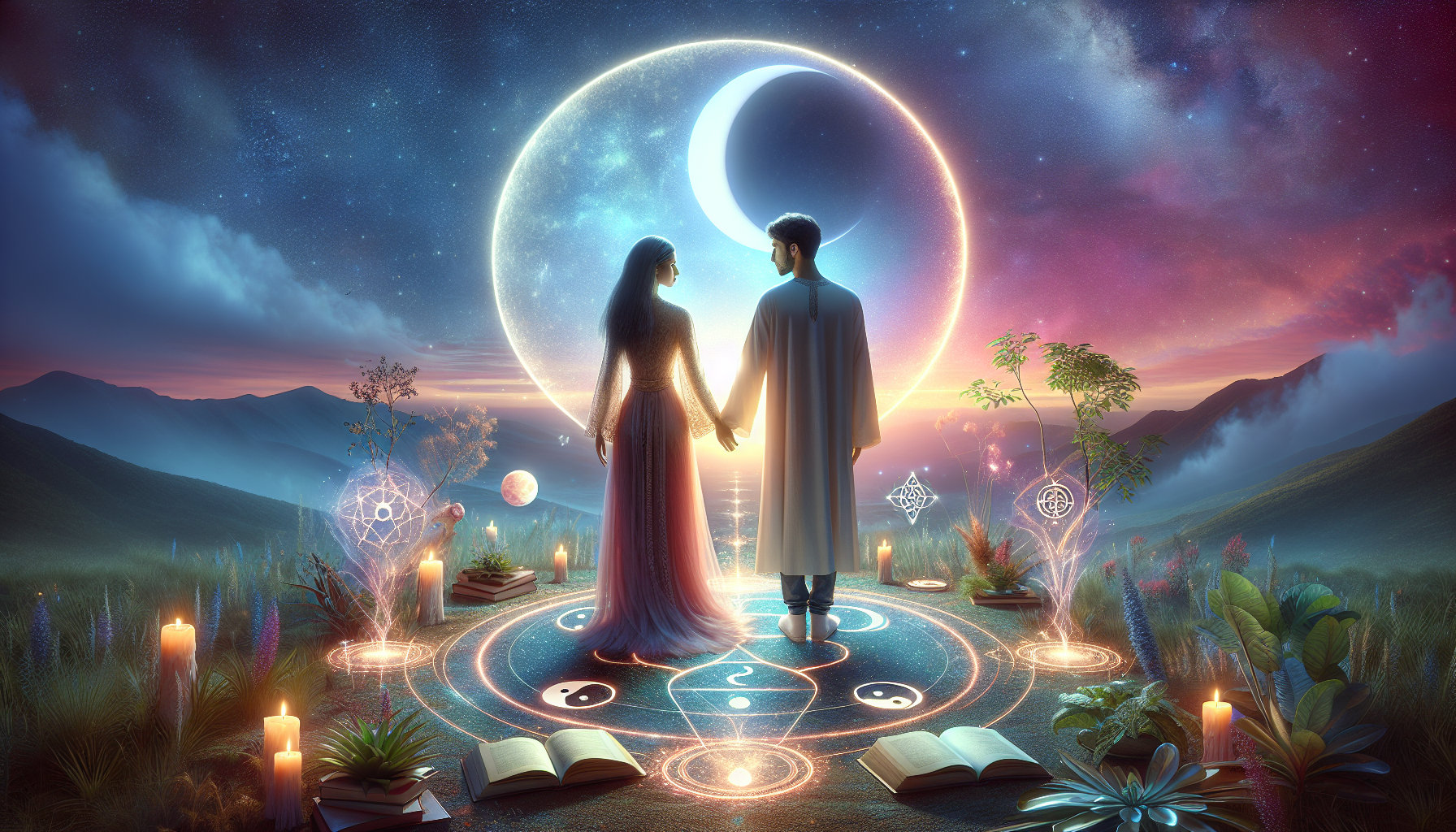Solar eclipses, those mesmerizing celestial events where the Moon passes between the Earth and Sun, casting a temporary shadow over our planet, have long captivated the imagination of humanity. From their scientific significance in helping us understand the cosmos to the rich tapestry of myths and legends they’ve inspired across cultures, solar eclipses bridge the gap between the empirical and the mythical. This article delves into the fascinating world of solar eclipses, exploring the intricate dance of celestial bodies that leads to these stunning phenomena, the path of totality and safe viewing practices, and the myriad ways in which they have been interpreted and celebrated throughout human history.

What Is a Solar Eclipse?
Welcome to our guided exploration into what a solar eclipse is, an event that has captivated humans for millennia. A solar eclipse occurs when the Moon moves between the Earth and the Sun, temporarily obscuring the Sun’s light. This celestial event only happens during a new moon when the Sun and Moon are exactly in line with the Earth, cloaked in an alignment known as syzygy.
Diving Into the Shadows
During a solar eclipse, the Moon casts two types of shadows on Earth – the umbra and the penumbra. Those standing in the umbra experience a total solar eclipse, where the Moon completely covers the Sun. Meanwhile, those in the penumbra witness a partial eclipse, where only a part of the Sun is obscured. The phenomenon presents not just a breathtaking spectacle but also a unique opportunity for scientific observations, offering insight into the Sun’s structure and the dynamics of celestial mechanics.
Types of Solar Eclipses
Solar eclipses are primarily classified into four types: total, partial, annular, and hybrid. Each type offers a distinct experience and insight into the intricate dance between our planet, its lunar companion, and the life-giving star at the center of our solar system.
| Type | Description |
|---|---|
| Total | The Moon completely covers the Sun, as observed from specific locations on Earth. |
| Partial | A part of the Sun remains visible as the Moon covers only a portion of it. |
| Annular | The Moon is too far from Earth to entirely cover the Sun, leaving a “ring of fire” visible. |
| Hybrid | Shifts between a total and an annular eclipse along its path. |
Solar eclipses offer an unmatched spectacle, combining the beauty of the cosmos with the thrill of celestial events. Besides their awe-inspiring appearance, they play a critical role in advancing our understanding of the universe. This exploration of what a solar eclipse is serves as a gateway to appreciating the larger cosmos, inviting us to witness one of nature’s most significant wonders.

Chasing the Moon’s Shadow
The quest to experience a solar eclipse, particularly the total eclipse, is a fascinating journey. This celestial spectacle, where daytime briefly turns to twilight, draws enthusiasts and scientists alike into its lure. Understanding the path of totality and the importance of safe viewing practices is essential for anyone eager to witness this rare phenomenon.
Path of Totality
The path of totality is a relatively narrow strip from which observers can view the Sun completely obscured by the Moon. Being in this path during a total solar eclipse offers an unrivaled experience, as stars appear in the daytime sky and temperatures drop. The environment changes, wildlife often becomes silent, and the horizon glows with the colors of sunset 360 degrees around. The path of totality reveals the stunning corona of the Sun, an outer atmosphere that is otherwise invisible to the naked eye.
Safe Eclipse Viewing
While the allure of a solar eclipse is undeniable, it’s crucial to observe this event safely. Looking directly at the Sun without proper protection can cause serious eye damage. Solar eclipse glasses equipped with solar viewing filters are a must-have. These glasses enable viewers to safely observe the eclipse as the Moon passes in front of the Sun. Never use regular sunglasses or improvised filters; only ISO-certified solar eclipse glasses ensure safe viewing.
Additionally, for those interested in photography or telescopic views, special solar filters are necessary for equipment to protect both the observer’s eyes and the camera sensors from the intense sunlight.
Worldwide Wonder
Solar eclipses are a global event, occurring at least twice a year in different locations around the world. While total solar eclipses are less common, partial and annular eclipses provide ample opportunities for observation. The excitement of chasing the Moon’s shadow has prompted travel and gatherings across continents, as enthusiasts seek to experience the fleeting, transformative moment of totality.
As we chase the Moon’s shadow, the phenomenon of a solar eclipse serves as a vivid reminder of the dynamic and interconnected nature of our solar system, offering both a thrilling experience and a unique opportunity for learning and reflection.

Exploring the Science and Mythology of Solar Eclipses
Solar eclipses have always been a source of wonder and intrigue, bridging the gap between science and mythology. These breathtaking events, where the Moon passes between the Earth and the Sun, casting a shadow over our world, offer not just a stunning spectacle but also a chance to delve into the mysteries of the universe. In this guide, we’ll unlock the secrets of solar eclipses, touching upon their scientific significance as well as the rich tapestry of myths that surround them.
Eclipse Science: Light from the Dark
The scientific study of solar eclipses has yielded groundbreaking discoveries about our cosmos. From ancient times, when eclipses were used to measure the size of the Sun and Moon, to modern investigations into the Sun’s corona, solar eclipses have been pivotal in advancing our understanding of celestial mechanics. Observing the corona, which is only visible during a total solar eclipse, has provided invaluable information about solar winds and the processes heating the Sun’s outer atmosphere.
Myths and Legends: Stories of the Shadow
Across cultures and centuries, solar eclipses have been woven into the fabric of our collective storytelling. In many traditions, eclipses are seen as powerful omens. For instance, the ancient Vikings believed eclipses occurred when wolves chased the Sun and Moon across the sky, occasionally catching and devouring them. Meanwhile, in Vietnamese folklore, a solar eclipse was the result of a giant frog devouring the Sun. Such myths underline the human inclination to imbue natural phenomena with narrative, enriching our cultural heritage.
Eclipses in the Solar System
Our Earth is not the only world in the solar system to experience the marvel of eclipses. Other planets, too, host their own celestial ballets. For example, Jupiter, with its four large moons, frequently witnesses solar eclipses. On Mars, its moons Phobos and Deimos are too small to completely cover the Sun but do cast significant shadows, creating partial and annular eclipses on the Martian surface. These extraterrestrial eclipses remind us of the universality of these phenomena across the cosmos.
The exploration of solar eclipses, from their scientific analysis to the myths that adorn them, unveils the depth of our connection with the universe. It combines the thrill of cosmic discovery with a touch of the stories we create to understand our world. As we uncover the secrets of solar eclipses, we join a long lineage of sky-gazers, scientists, and storytellers, all united by the quest to comprehend the profound beauty of our universe.
Solar eclipses stand at the crossroads of science and mythology, serving as a profound reminder of our place in the universe and the endless wonders it holds. Through understanding the mechanics behind these celestial events, observing them safely, and exploring the rich cultural narratives they’ve inspired, we deepen our connection to the cosmos and to each other. As we wrap up this exploration of solar eclipses, don’t forget to test your newfound knowledge with the 10-question quiz below. Whether you’re a seasoned astronomer or a curious novice, there’s always more to discover about the intriguing phenomena of solar eclipses.







